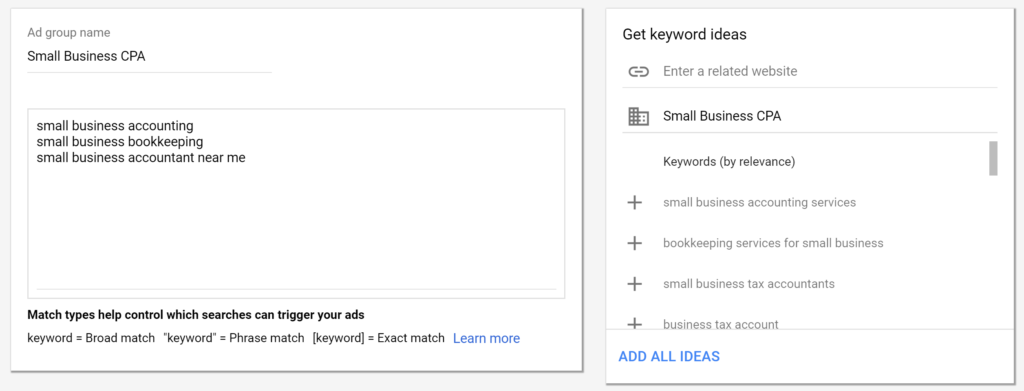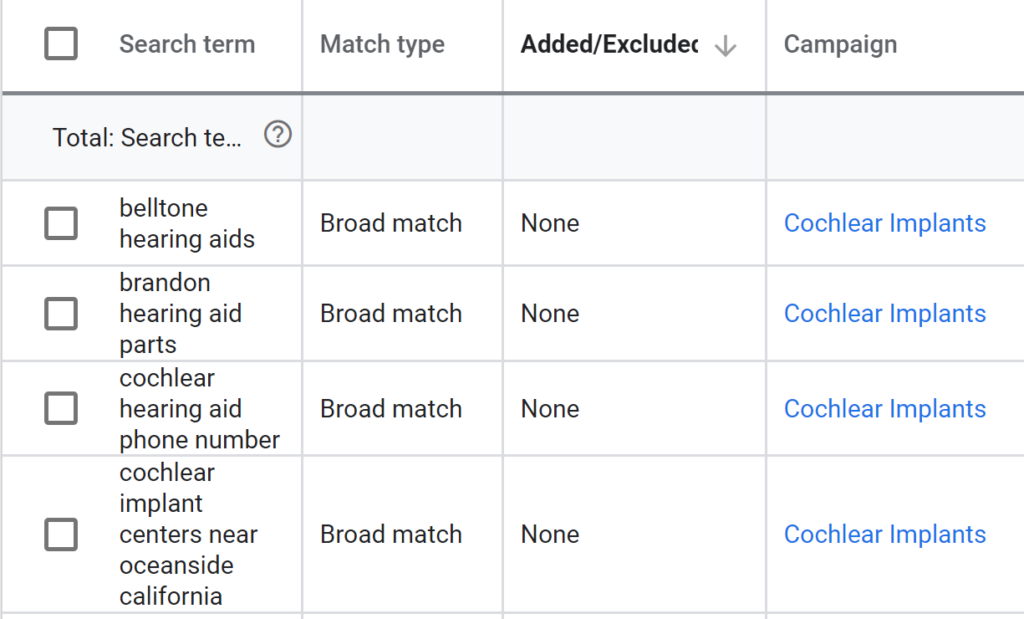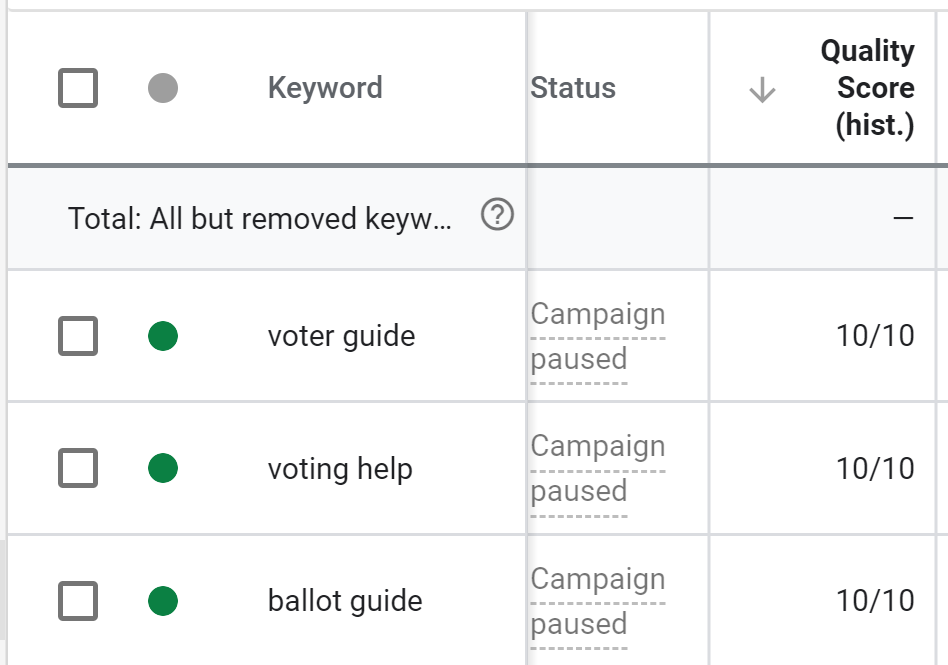Too often, marketers put SEO and SEM (paid search) against each other. SEO professionals believe that Google takes up too much real estate with ads, while SEM pros enjoy the immediate results that come from paid promotions.
However, these two marketing strategies can help each other. Your SEM campaigns can provide significant insight into your SEO success – and guide your overall decision making. Check out how you can merge these two efforts to turn your SEM keyword research into SEO results.
Generate New SEO Ideas With SEM Keyword Research
At its most basic level, you can use your Google Ads campaigns to identify new keywords that are relevant to your brand. There are two key ways to do this.
Start by looking for keywords to add to a new ad group. Google’s Keyword Planner tool will list dozens of keywords (sorted by relevance) based on the term you add or the website that you plan to drive traffic to. Searching for keywords based on a website is a great way to make sure that the keywords that you are bidding on – or optimizing for – are relevant in Google’s eyes. You will likely have higher quality scores in your search campaigns along with better SEO results.

The next step in your SEM keyword research is to look at the search terms section under the keywords tab. This page lists out the actual terms that users searched for that brought people to your website. They include keywords that Google might not have thought of, misspellings, and less relevant terms (that you may want to set as a negative if they don’t benefit you).

For example, looking at the search terms above, you can see how users looking for cochlear implants would end up on an audiologist’s website. The doctor could choose to write a blog post around the keyword “Beltone hearing aids” or create a landing page promoting them. The doctor could also build a campaign with keywords featuring local terms in Oceanside, California if that is where their company is based.
You will want to take a high-level view of these search terms with a large time window to see which ones are actually in demand, versus one-off results.
See Which Terms Perform Best for Your Brand
While there are dozens of SEO and SEM tools on the market, nothing beats first-hand SEM keyword research. While certain keywords are more competitive or popular than others, your brand might actually have more success with a whole different set of terms. This is where the SEM research comes in. Look at your top campaigns and keywords to see which terms are strong for your brand. A few Google metrics to focus on include:
- Click-thru rate (CTR): percent of people who click on the ad they see. A high CTR on SEM means your services address the needs of Google search users.
- Conversion rate (CR): percent of people who buy from your website through that keyword. A high CR proves that organic users will be less likely to bounce and will spend more time looking at and buying your products.
- Cost-per-acquisition (CPA): the cost you spend to bring in a new client. A lower CPA on certain keywords and campaigns means your ad efforts are more successful.
Ideally, based on these demographics, you can identify the “low hanging fruit” needed to improve your SEO efforts. You want to see which high-performing paid keywords have weaker or lower SEO rankings. By improving these weaker pages and better optimizing for these terms, you can make a big impact on your organic search.
Decide Which Keywords and Themes to Prioritize
Almost every company is limited by time and budget constraints, and your challenge is to get as much organic traffic as possible with the limited resources that you have. If you offer multiple products or services, turn to your SEM efforts to see where you should focus your efforts.
First, look at the market share at your company – there’s no point investing all of your time into something that only brings in marginal sales. Out of the top products that you offer, see which ones perform best in paid search. You may have better luck optimizing for a strong SEM product to boost your overall rankings, or you could work to improve your SEO efforts for a weaker SEM product in order to have better paid search results in the future.
If you are dedicating your SEO efforts toward a specific product or service, track how your rankings improvements also help your SEM campaigns. Users like seeing both paid and organic results together in the same SERP. This builds your credibility and the value of your brand in the customer’s eyes. In fact, some studies have found that an organic listing without a similar paid ad could result in an 89% drop in clicks. This data alone is proof that your SEO and SEM teams need to work together closely.
Learn What Content Needs to Be Improved
Your SEM keyword research will improve your SEO efforts, which will in turn help your SEM campaigns. These two elements are inseparable and can build each other up. One of the best terms you can look at in your paid search campaigns is the quality score for various keywords. The quality score looks at the relevance of the ad and landing page compared to the keyword that you are bidding on. The two examples below highlight keywords that would have a good and bad quality score.
Good:
- Keyword – estate planning in Toronto
- Ad – Hire Joe Canada Today, Your Top Estate Planning Lawyer in Toronto
- Landing Page – Joe Canada’s website page discussing estate planning
Bad:
- Keyword – real estate market in Toronto
- Ad – Call Joe Canada After a Family Member Passes for Your Estate Planning
- Landing Page – Joe Canada’s homepage
As you can see, the latter keyword is less relevant to the estate agent’s services because the user wants information unrelated to estate planning. The landing page is also less relevant because it isn’t directly related to the ad. The quality score in the second option would likely be much lower.
From an SEM perspective, the Ads manager would remove irrelevant keywords so they didn’t waste their money on the wrong traffic. However, an SEO professional would also see which landing pages are lacking (or missing) on a website and work to improve or create them. This will raise the quality scores in Google Ads while giving the SEO team guidance on what content to invest in – improving their organic results.

The example above shows how keywords related to a voter guide or voter services website are highly relevant for an Adwords campaign. Users need voting help and the website provides it. These are good keywords to target for an SEO strategy in parallel.
Grow Your Marketing Footprint
One of the best ways to grow your marketing performance is to develop a plan where both aspects of your Google marketing compliment strategy each other instead of competing with each other. A combined resources and team-focused strategy can help you bolster your SEO efforts and will improve your SEM results.





